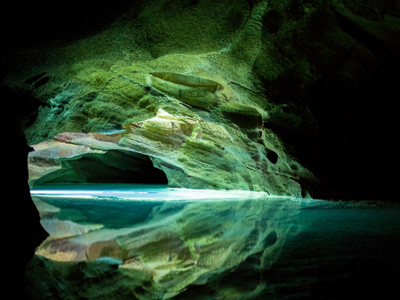
Caves are found all over the world.
Earth Science - The Study of Caves and Cave Formations
This Science quiz is called 'Earth Science - The Study of Caves and Cave Formations' and it has been written by teachers to help you if you are studying the subject at middle school. Playing educational quizzes is a fabulous way to learn if you are in the 6th, 7th or 8th grade - aged 11 to 14.
It costs only $12.50 per month to play this quiz and over 3,500 others that help you with your school work. You can subscribe on the page at Join Us
Here we get to a really fun part of science. That is the study of caves and the rock formations that are found there.
Types of Caves
1. Solutional caves are the most frequently occurring caves. This type of cave forms in rock that is soluble such as limestone but they can also form in other rocks such as chalk, dolomite, marble, salt and gypsum. The Carlsbad Cavern in New Mexico is believed to be an example of solutional caves.
2. Primary caves are caves that formed at the same time as the surrounding rocks. Lava tubes are formed through volcanic activity and are the most common primary caves.
3. Littoral caves are also known as sea caves and are found along the coastline. Littoral caves are generally around 16 ft. to 164 ft. in length but may exceed 980 ft.
4. Corrasional or erosional caves are those that formed entirely by erosion caused by flowing streams that carry rocks and other sediments. This type of cave can occur in any type of rock, including hard rocks such as granite.
5. Glacier caves are formed by melting ice and flowing water within and under glaciers. The cavities of these caves are influenced by very slow moving ice.
6. Ice caves should not be mistaken for glacier caves. Rather, ice caves are bedrock caves that contain year round ice formations.
7. Fracture caves are caves that are formed when layers of soluble minerals, such as gypsum, dissolve out from between layers of less soluble rock.
8. Talus caves are formed by the openings among large boulders that have fallen down into a random heap, often at the bases of cliffs.
9. Anchialine caves are caves that are usually found along the coast. They contain a mixture of freshwater and sea water. They occur in many parts of the world.
Stalagmites and Stalactites
When going through caves you will often see formations that rise up from the ground. These formations are known as stalagmites. Stalagmites are a type of growing rock that is formed as minerals from the ceiling of the cave drip down to the floor of the cave. Stalagmites contain lava, minerals, mud, peat, sand, pitch, calcium and sinter.
Formations in a cave that hang downward from the cave’s ceiling are called stalactites. Stalactites are also found in hot springs and manmade structures such as mines and bridges. In a cave, over decades, sometimes centuries, if a stalactite eventually reaches the top of a stalagmite, a column is formed.
Now let’s see what you have learned about caves and some of their formations. Read each question below and see if you can find the correct answer to each question.
Ready for more?
not all...
quizzers. Try to win a coveted spot on our Hall of Fame Page.







